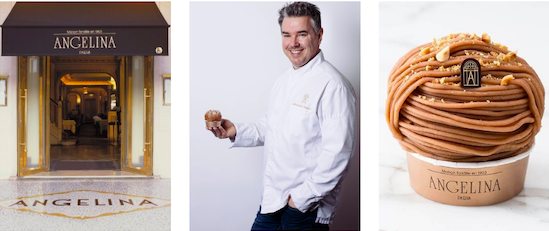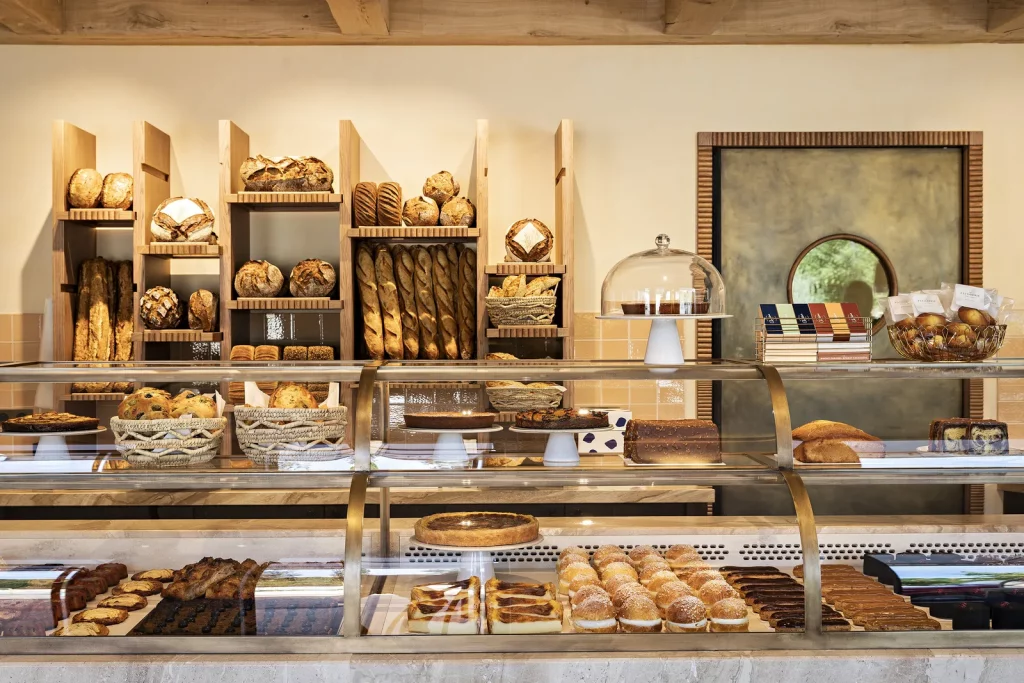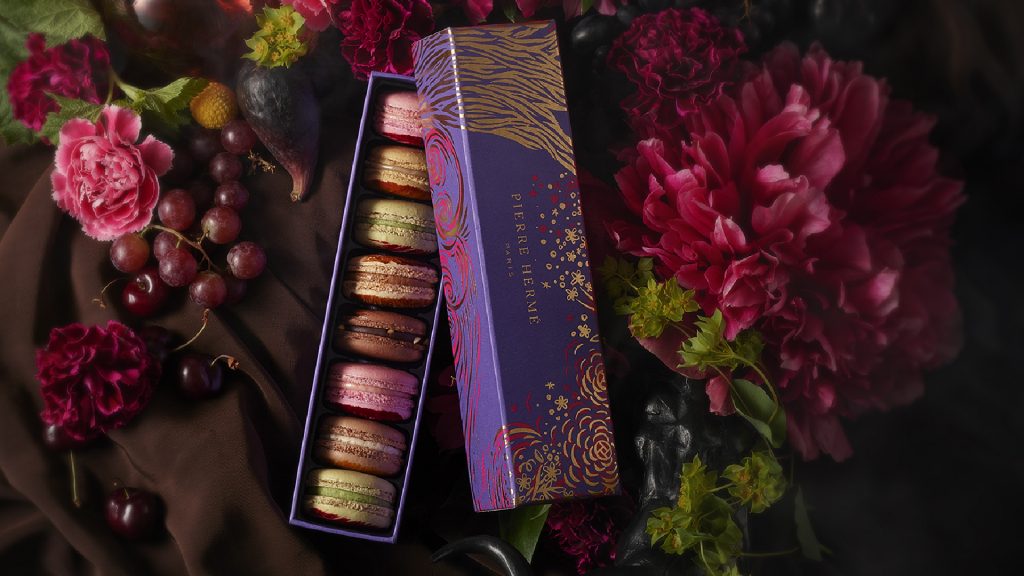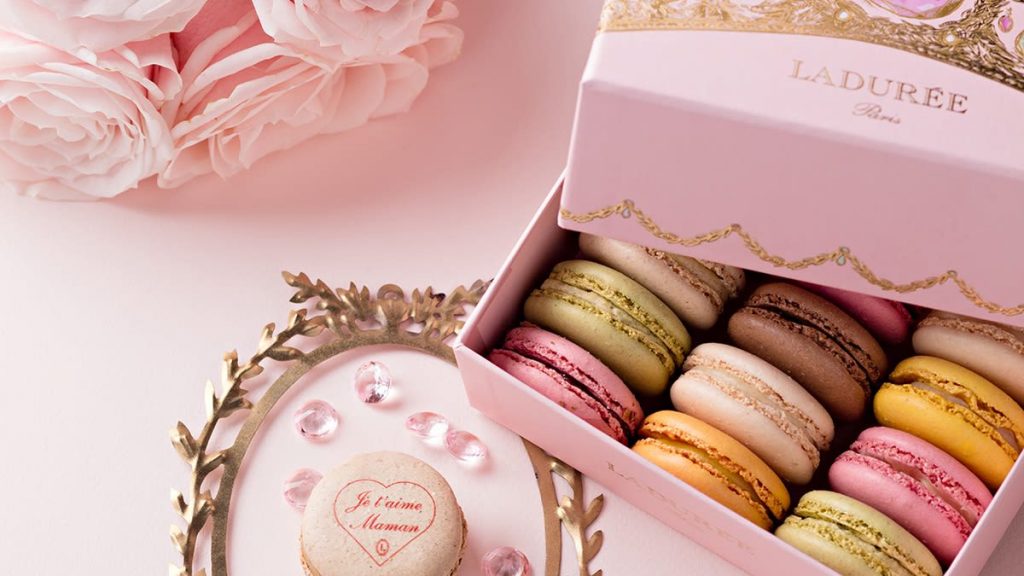The luxury pastry in France
“Dessert is universal, but pastry is French”, says Yves Thuriès.
Indeed, patisserie plays a fundamental role in French consumption. For 60% of French people, pastries are a must for special occasions. Each household spends an average of 350 euros a year on pastries. The patisserie sector, supported by the bakery and pastry sector, generated annual sales of almost 11 billion euros in 2019.
French pastry is living a new golden age thanks to luxury pastry. Indeed, high-end delicacies have been taking off for a decade now, they are pastries with a certain standing in terms of aesthetics, taste and originality. Each creator has his own universe and storytelling that make travel consumers thanks to specific emotions.
Today, the most famous luxury pastry houses are: Yann Couvreur, LaDurée, Angelina Paris, Cédric Grolet, Pierre Hermé…
Tearooms, the new trend?
A tearoom is a place where people gather to enjoy tea, coffee or hot chocolate accompanied by luxury pastries.
The first public tea room in France was opened in Paris in 1900 under the name of LaDurée, today one of the world’s most famous and recognized tea rooms.
The tea consumption market in France was close to 500 million euros in 2018. Over the past ten years, the number of tea rooms in France has soared. In 2020, tea-based drinks generated sales of over €322.7 million.
People who enjoy high-end pastries are looking for discovery and culinary experience. They are willing to pay a little more to enjoy a quality pastry with a know-how of excellence of a renowned House.
Today, new concepts have been created, such as tearooms that double as bookshops, or tearooms that double as art galleries. These trendy tea rooms are now frequented by all generations.
The creation of Angelina Paris
The unmissable tearoom Angelina celebrates its 120th anniversary this year!
The first Angelina tea house opened in 1903 on rue de Rivoli in Paris by Anton Rumpelmayer, an Austrian confectioner, and quickly became a favorite place among Parisian high society.
Driven by his success in South of France where he opened several “Rumpelmayer” stores, he set out to conquer the French capital. “Angelina” in honor of his daughter-in-law, who was named Angelina.
Belle Epoque decor
Angelina is an institution where many Parisians, tourists and celebrities come to sample the store’s delicacies and admire its iconic Belle Epoque decor inspired by the Art Nouveau. Art Nouveau is as much a sign of a style as of an era, that of the 1900s. At Angelina, it is declined in a profusion of moldings, cornices and beveled mirrors. Designed by the Dutch architect Edouard-Jean Niermans, this decor is enriched by frescoes by the painter Vincent Lorant-Heilbronn, inspired by the ochre and blue of the Riviera, so dear to the Rumpelmayers.
Over the years, it has hosted renowned figures such as Coco Chanel and Marcel Proust, making it a symbol of the city’s timeless charm and sophistication.
Specialties of the House
The company is known for its gourmet breaks that respect French tradition and the art of living. Unique, typically Parisian places that showcase French specialties for breakfast, brunch or lunch on the go, depending on your mood.
Its best sellers include the famous Mont Blanc and hot chocolate, whose know-how has been handed down from generation to generation.
Its legendary hot chocolate, named “The African” is made from three kinds of African cocoa from Niger, Ghana, and Côte d’Ivoire. Served with a dollop of whipped cream, it’s less a drink and more an exquisite dessert in a cup.
Concerning the Mont Blanc, it is a meringue covered in chestnut cream vermicelli, is a perennial favorite. This specialty of the House is sold up to 600 per day.

Photo source: Paris Secret
Angelina’s values
Angelina is engaged to three issues. First, the institution wishes to have a responsible kitchen through responsible pursaching as seasonal products, French origin for the raw materials, certification “cacao trace” for the chocolate and the paper of the cards is printed in a certified “Imprim’Vert” printing house.
Also, Angelina wants to be part of the preservation of natural resources by the diminution of food waste (doggy bag, Too Good To Go), the waste reduction and sorting, the responsible packaging and the products in season and mostly of French origin.
Then, the tearoom has a solidarity and social commitment in regard to the parity between men and women. Angelina shows again its engagement by a permanent collaboration with the Gustave Roussy center for Pink October and breast cancer research and by a donation of “galettes des rois” to the association “Petit Coeur de beurre”, for the children of the Necker hospital every year for Epiphany.
The evolution of the institution
In January 2005, Angelina was taken over by the Bertrand Restauration group which is a French firm founded and owned by Olivier Bertrand.
In 2013, the Bertrand group brought in renowned pastry chef Christophe Appert to revive the house’s iconic pastries, notably the Mont-Blanc. He wants to lighten them to suit today’s tastes, without ever losing their identity. To reinvent the range, he has set up a laboratory in Colombes, where 42 craftsmen create a menu that combines the House’s classics with a dozen creations unveiled in two new collections a year, according to the seasons.
Restored in 2014, the Angelina house has regained the delicacy of its original colors and jealously preserved its vaulted ceilings, the DNA of the place.
Since 2016, Isabelle de Bardies is the CEO of Angelina. She wishes to innovate for the trade. To reinvigorate the brand, she decided to open a “Mademoiselle Angelina” tea room in the Luxembourg Museum.
Some data
With sales up 9% in 2019 and 200 employees, the company continues to expand and strengthen its brand. The firm’s index will reach 85 points out of 100 in 2022 (for the historic tearoom on rue de Rivoli) concerning the equality between men and women. Bertrand Group’s iconic Angelina tea room recorded sales of over 1.8 billion euros in 2020.
When Angelina meets the cinema
In 1982, the tearoom hosted the filming of “La Boum 2” for a few scenes with Sophie Marceau and Denise Grey.
Worldwild firm
Nowadays, thanks to its pastry-making know-how and confectionery expertise, Angelina counts more than 30 boutiques and tea rooms around the world (France, USA, Asia and Middle East) and stills to deliver an unforgettable experience for its customers. Established in iconic locations in and around Paris, including the Palais des Congrès for the past 30 years and the Château de Versailles, the brand emphasizes French art de vivre and seeks to attract local customers.
It is a place where the past meets the present, where elegance meets decadence, and where a single visit can transport the customer to the heart of Parisian refinement.
Sources
Une maison centenaire toujours dans l’air du temps avec le chef Christophe Appert
Angelina Paris : le célèbre salon de thé fête ses 120 ans
Angelina, plus qu’un salon de thé, une identité
Au salon de thé Angelina à Paris, c’est le chocolat show
The mythical Angelina Tea Room
Angelina in Paris – loved among Coco Chanel and Proust
Isabelle De Bardies : « Nous Allons Lancer Angelina A La Conquête Du Monde »
Forte d’un CA en hausse de 9% en 2019, Angelina vise l’international
Les chiffres sur la consommation de thé en France
Appropriation du thé en France : le rôle des salons de thé
Quels sont les chiffres et les données sur le marché des pâtisseries?
Octobre Rose : le mythique Salon de Thé Angelina dévoile une pâtisserie éphémère !


